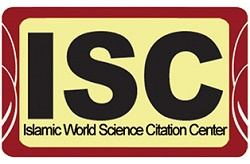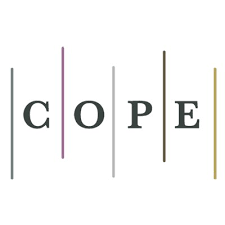Investigation and identification of social harms in the new city of Sahand, Tabriz (With emphasis on Mehr housing)
DOI:
https://doi.org/10.52547/ijimes.1.3.15DOR:
https://dorl.net/dor/20.1001.1.27832678.2021.1.3.2.6Keywords:
Social harms, Sahand New City, Mehr HousingAbstract
Purpose: With the increase of Iran's urban population, large cities faced many problems and new cities were located and built to attract population overflow in the area of these cities. The new city of Sahand was built to reduce the demographic, economic, social and physical problems of the metropolis of Tabriz in the sphere of influence of this city. With the creation of Mehr housing in phases 2, 3 and 4 of this city, a new issue was raised. This article seeks to examine and identify the social issues and problems of this city, prioritize them and identify solutions to reduce the impact.
Methodology: The research method used in this research is applied and survey.
Findings: Results show that the most important problems are: drug use, class differences, cultural poverty, distrust of neighbors, distrust of city officials, economic poverty, presence Thugs, the presence of badly supervised women, unusual relationships between girls and boys, harassment of women, quarrels and conflicts, running away from home, begging, unconventional relationships between married men and women, child abuse and white marriage, relationships Poor neighborhood, general dissatisfaction with living conditions, feeling of insecurity in parks and gardens, inadequate lighting and lighting of roads, flooded roads, traffic jams and the problem of parking cars, unsuitable sidewalks, lack of medical centers, lack of playgrounds for children and adolescents, Lack of green space, inadequate garbage collection system, low quality of housing, lack of recreational space for citizens, etc., which are the most important factors in the occurrence and emergence of social harms in this city.
Originality/Value: In this paper, investigation and identification of social harms in the new city of Sahand, Tabriz (With emphasis on Mehr housing) is done.
Downloads
References
Atash, F., & Beheshtiha, Y. S. (1998). New towns and their practical challenges: The experience of Poulad Shahr in Iran. Habitat International, 22(1), 1-13. https://doi.org/10.1016/S0197-3975(97)00018-0
Kumwenda, M. K., Johnson, C. C., Choko, A. T., Lora, W., Sibande, W., Sakala, D., ... & Corbett, E. L. (2019). Exploring social harms during distribution of HIV self‐testing kits using mixed‐methods approaches in Malawi. Journal of the International AIDS Society, 22, e25251. https://doi.org/10.1002/jia2.25251.
Shali, M., Irannejad, E., & Rahimi, M. (2021). Analysis of Spatial Inequalities in Tehran Metropolis. International Journal of Innovation in Management, Economics and Social Sciences, 1(2), 1-11. https://doi.org/10.52547/ijimes.1.2.1
Parviznejad, P. S., & Akhavan, A. N. (2021). Impact of the Tourism Industry Scenarios in Urban Economy:(Case Study Tabriz). International Journal of Innovation in Management, Economics and Social Sciences, 1(1), 1-15. https://doi.org/10.52547/ijimes.1.1.1
Seyed Fatemi, S. M., & Hosainzadeh-Dalir, K. (2010). Analysis of Sahand New Town Role in Spatial Order in Tabriz Urban Region. Journal of Urban-Regional Studies and Research, 2(6), 1-18.
Afshar Kohan, J. (2009). Typology of Iranian Youth Social Problems with Emphasis on Young Women Situation. Women's Strategic Studies, 11(44 (summer 2009)), 111-141.
Amboro, J. L., Wahyuningsih, N., & Prameswari, N. S. (2020). A structural functionalism point of view: Ritual cere-monyphilosophyofGrebegMauludatKasunananpalace, Surakarta.
Yu, L., & Ren, H. (2021). An identity conflict perspective on female expatriate work adjustment. Journal of Global Mobility: The Home of Expatriate Management Research. https://doi.org/10.1108/JGM-08-2020-0056
Aksan, N., Kısac, B., Aydın, M., & Demirbuken, S. (2009). Symbolic interaction theory. Procedia-Social and Behavioral Sciences, 1(1), 902-904. https://doi.org/10.1016/j.sbspro.2009.01.160
Ghahremani Nahr, J., & Bathaee, M. (2021). Design of a humanitarian logistics network considering the purchase contract. Journal of Decisions and Operations Research, 6(3), 423-444. DOI: 10.22105/dmor.2021.270988.1311
de Silva, P. (2018). Buddhist Perspectives on Contemporary Social Pathology. In The Psychology of Emotions and Humour in Buddhism (pp. 25-28). Palgrave Pivot, Cham. https://doi.org/10.1007/978-3-319-97514-6_4
Ghahremani-Nahr, J., Nozari, H., & Sadeghi, M. E. (2021). Investment modeling to study the performance of dynamic networks of insurance companies in Iran. Modern Research in Performance Evaluation.
Lavorgna, A. (2021). Social Harms in Pandemic Times. In Information Pollution as Social Harm: Investigating the Digital Drift of Medical Misinformation in a Time of Crisis. Emerald Publishing Limited. https://doi.org/10.1108/978-1-80071-521-920211001
Published
How to Cite
Issue
Section
License
Copyright (c) 2021 Ebrahim Irannejad, Mohammad Shali, Mohadeseh Abedi-Diznab

This work is licensed under a Creative Commons Attribution 4.0 International License.












